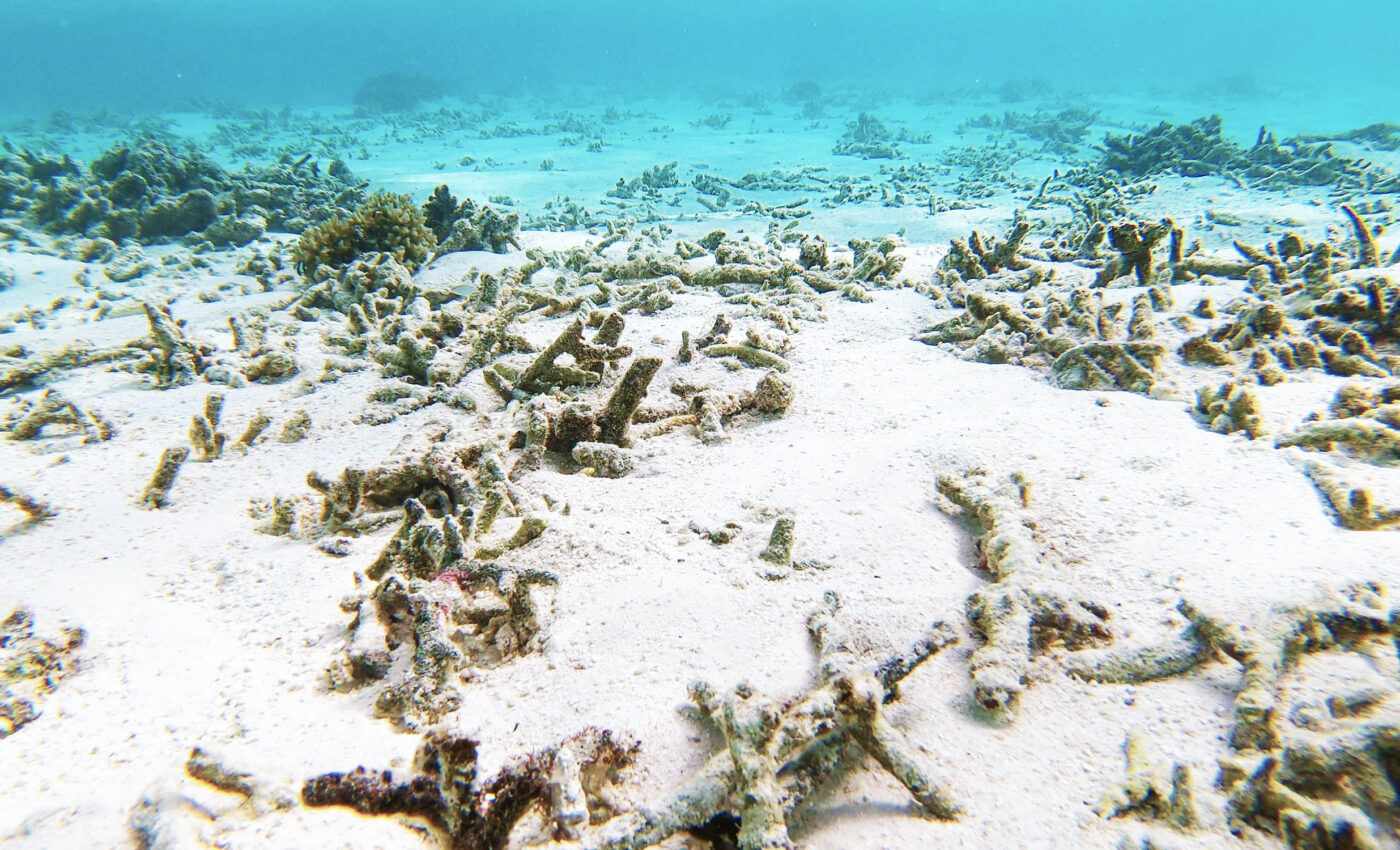
Over 60% of global coral reefs face bleaching amid rising temperatures
In a disconcerting update from the U.S. National Oceanic and Atmospheric Administration (NOAA), the agency revealed that bleaching has affected nearly two-thirds of the world’s coral reefs due to significant heat stress in just the past year.
As of now, an alarming 60.5% of coral reefs globally have been impacted by this phenomenon, and unfortunately, this percentage is on the rise.
Catalysts behind the reef bleaching crisis
This mass bleaching is not an isolated incident but part of a disturbing trend exacerbated by climate change and a recent El Niño event, which have collectively driven ocean temperatures to unprecedented highs.
“We are seeing ocean temperatures that are very extreme in nature,” expressed Derek Manzello, coordinator of NOAA’s Coral Reef Watch.
Understanding coral bleaching
Coral bleaching occurs when corals, under stress, expel the symbiotic algae residing in their tissues — algae that provide essential nutrients through photosynthesis. This expulsion turns the corals pale and greatly heightens their vulnerability to starvation and disease.
Furthermore, the gravity of the current situation is underscored by historical comparisons. The last major global bleaching event, spanning from 2014 to 2017, affected 56.1% of the world’s reefs, while earlier events in 1998 and 2010 impacted 20% and 35% of reefs, respectively.
Although the current event has impacted a broader area, Derek Manzello notes that the 2014-2017 episode remains the most severe on record, owing to its duration and intensity.
However, the ongoing 2023-2024 event may soon exceed it in severity.
Caribbean reed at the epicenter of bleaching
The Caribbean reefs have been particularly hard-hit, with a staggering 99.7% of the Atlantic basin’s reefs experiencing bleaching-level heat stress in the past year. “The Atlantic Ocean has been off the charts,” Manzello highlighted.
A recent study indicated severe coral mortality, ranging between 50% and 93%, in areas like Huatulco, Oaxaca, along the Mexican Pacific.
The situation appears grim as we approach the summer, with heat stress already accumulating in the Southern Caribbean.
Alarmingly, the thresholds for bleaching have been crossed much earlier in the year than ever before. “This is alarming because this has never happened so early in the year before,” Manzello warns.
Addressing coral reef bleaching and its global impact
Looking ahead, scientists anticipate further bleaching events in the Southern Caribbean, around Florida, and at the Mesoamerican Barrier Reef, the world’s second-largest reef.
“El Niño is dissipating, but the ocean is still anomalously hot. It won’t take much additional warming to push temperatures past the bleaching threshold,” Manzello explained.
The distressing trend of coral bleaching poses a severe threat to marine biodiversity and the health of ocean ecosystems globally.
This ongoing crisis underscores the urgent need for comprehensive measures to mitigate climate change and protect our planet’s vital coral reefs.
Tips to save coral reefs from bleaching
Following measures may potentially reduce the current rate of coral reefs bleaching:
Reduce greenhouse gas emissions
Shift from fossil fuels to renewable energy sources such as solar, wind, and hydroelectric power. Lowering CO2 emissions reduces global warming, which is a major cause of coral bleaching. Elevated water temperatures stress corals, leading them to expel the symbiotic algae (zooxanthellae) they rely on for energy, causing bleaching.
Protect marine areas
Designate and enforce Marine Protected Areas (MPAs) where activities such as fishing and mining are restricted. MPAs provide safe havens for corals and marine life, reducing stress from human activities and increasing resilience against bleaching events.
Promote sustainable fishing
Implement quotas and regulations to prevent overfishing, use of destructive fishing methods, and bycatch. Healthy fish populations maintain balanced ecosystems, which support coral health. Sustainable practices also prevent physical damage to coral structures.
Control coastal development
Enforce zoning laws and environmental impact assessments for coastal projects. Implement sustainable development practices. Reducing runoff from construction, agriculture, and other activities decreases sediment and nutrient pollution, which can smother corals and promote harmful algal blooms.
Reduce pollution
Minimize the use of fertilizers and pesticides, improve waste management, and control plastic pollution. Lowering the amount of pollutants entering the ocean prevents water quality degradation that stresses coral reefs. Nutrient pollution can lead to eutrophication, causing algal blooms that block sunlight and deplete oxygen.
—–
Like what you read? Subscribe to our newsletter for engaging articles, exclusive content, and the latest updates.
Check us out on EarthSnap, a free app brought to you by Eric Ralls and Earth.com.
—–













